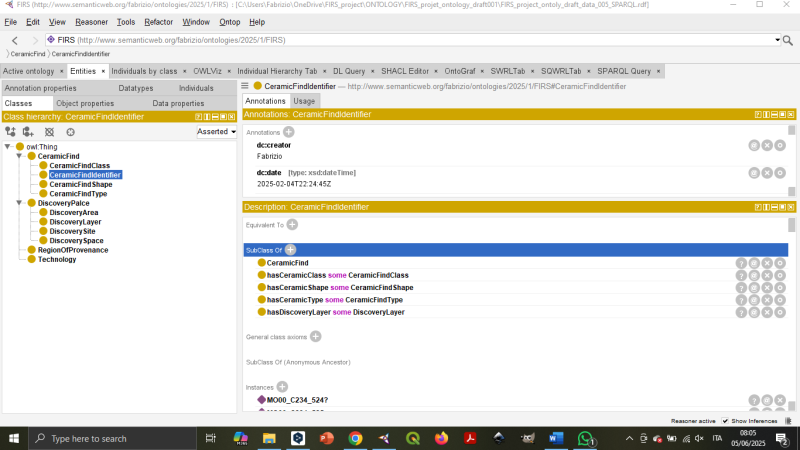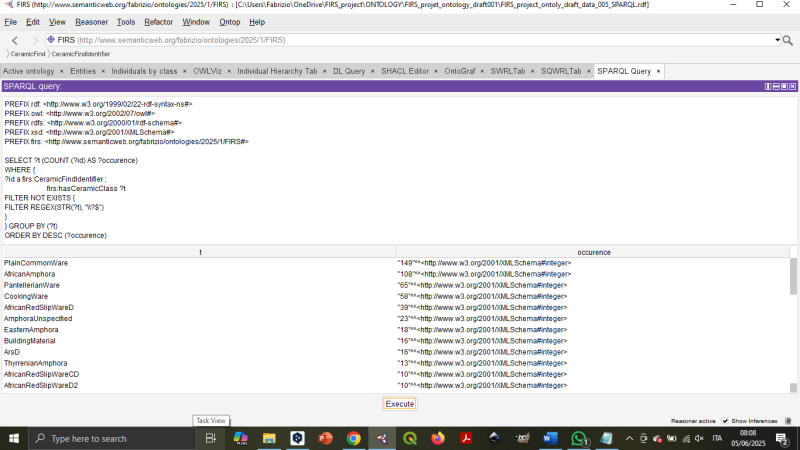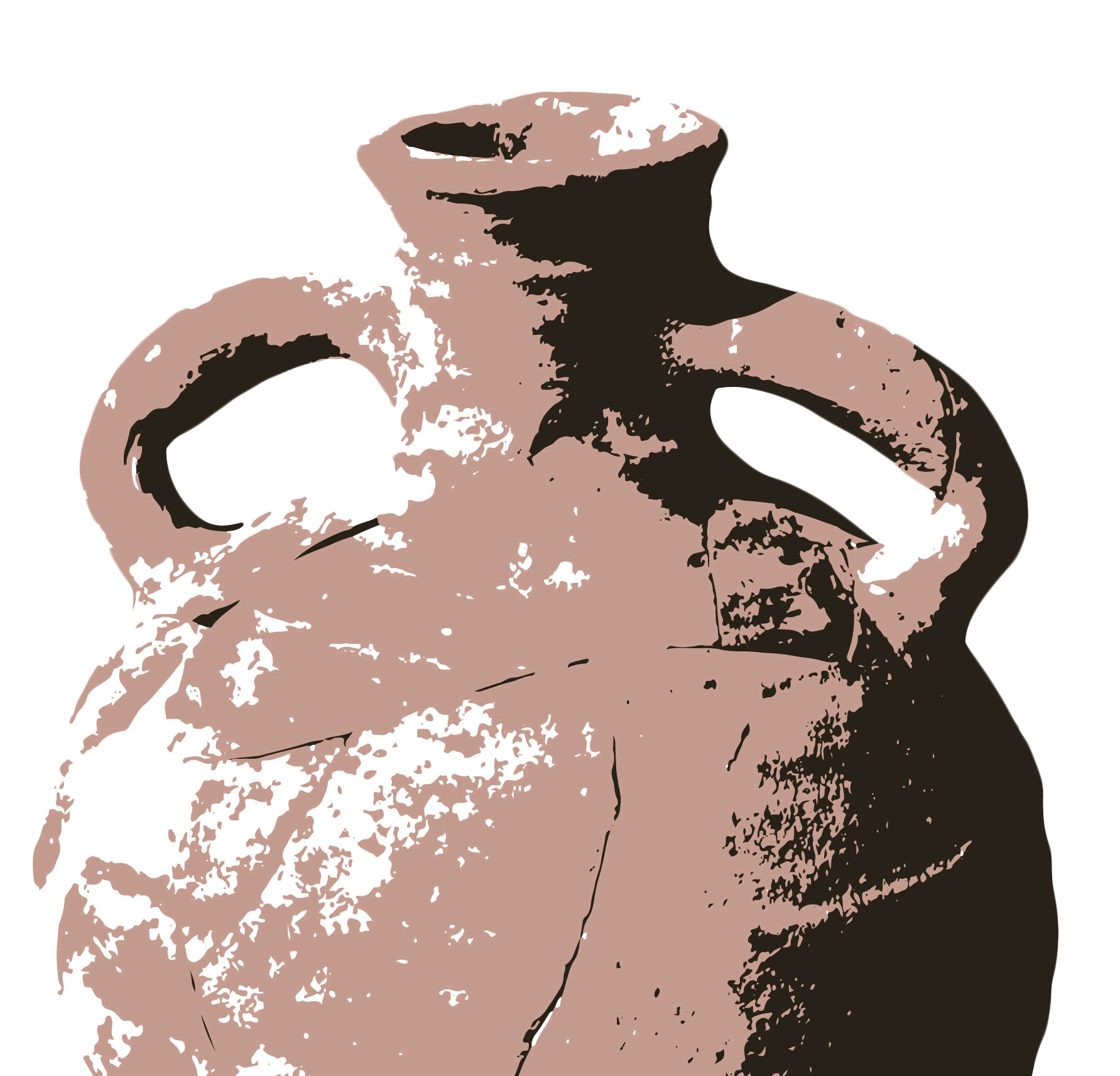Ontologies are highly flexible tools that use hierarchies of classes, properties, and individuals to organise and connect concepts, making them understandable to both humans and machines. They can capture domain-specific knowledge while ensuring interoperability through standardised vocabularies. This holds great potential for certain domains of archaeology, such as ceramic studies, where heterogeneous approaches to data collection and management still pose challenges for effectively comparing, sharing, and reusing research data. Moreover, the reasoner enables the generation of new inferred information and the automatic classification of data according to defined classes.
Modelling the ontology schema and mapping tabular data to RDF/OWL has been one of the major milestones of 2024. This achievement was made possible using Protégé, a free and open-source software for ontology modeling.

SPARQL queries allow the dataset to be explored and enable the retrieval of many different kinds of information. For example, they can provide quantitative data on specific classes of artefacts, helping to assess the volume of imports, their distribution, and their changing proportions across contexts.

Bibliography
- Van Helden, D., Y. Hong and P. Allison. 2018. Building an Ontology of Tablewares using 'Legacy Data', Internet Archaeology 50 https://intarch.ac.uk/journal/issue50/13/1.html
